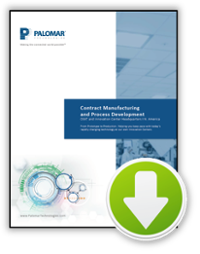How do you construct a bridge across a broad channel of water when the middle is far too deep to build one or more of the needed interim supports? This was the question facing Thomas Telford at the beginning of the nineteenth century. His solution took the form of the world’s first “suspension bridge”. In essence it meant building strong foundations at the beginning and end point of the crossing; then somehow traversing the distance by sending a cable weighing hundreds of tons from one end to the other; then converting that cable into “scaffolding” from which to hang or place platforms; then, and finally, adding platforms until you reach the other side.
![]()
If that does not sound so straightforward, the logistics were even more challenging and complicated. The Menai Suspension Bridge, built in 1821, required horizontal cables weighing 128 tons each to span that middle distance, which was well over half a mile. Even today that is a mighty undertaking, let alone in late Georgian England. So how did Telford secure his technical triumph? In particular how did he get those massive cables across such a wide gap?
Using Archimedes’ principle of leverage, lighter, then ever heavier ropes, were drawn through a succession of pullies until the final iron leviathan could be brought across the water channel dividing the two points. With the final “monsters” in place, additional cables were subsequently vertically attached creating a kind of skeleton over which physical platforms could be laid until the entire stretch of water was traversed. Though the underlying principle—leverage—was articulated as a formal principle two and a half millennia earlier, Telford’s was an absolute first in terms of scale and weight of materials used. It says a great deal about his engineering skills that this bridge is still in use today. The wooden platforms were replaced in 1899 but it was not until 1938 that the original iron cables needed to be replaced by steel.
The underlying principle represented by leverage was solution by gradation. Tackling a problem with known knowledge but pushing that knowledge at the margins so that the next more difficult step could be negotiated. The key to success was rightly identifying that next upward step, then working patiently and methodically to leverage it.
![]()
Readers will immediately recognize that this is a good, if not very good analogy referencing the evolution of the semiconductor packaging industry. Not only over the past 50 years, but going back to its earliest beginnings—maybe even to when electricity was first “discovered”. From youthful school days, many of us will remember learning about those nascent experiments performed by Benjamin Franklin flying his kite which in turn led to the invention of the lightning rod. This may seem a long way removed from the semi-conductor chip, yet maybe not; both share the application of human ingenuity in directing or harnessing the force of electricity to a desired outcome. That surely is the very definition of a chip?
If there is a “secret” in any semiconductor advance, it is realizing that such control derives from certain inalienable physical laws, and that when nature throws up a challenge, it nearly always provides a solution. We just have to find it.
In terms of recent semiconductor packaging developments, this is little better represented than in some of the more recent insertions into our common vocabulary. Such references as “chiplet” and “quasi-monolithic chip”. The not-so-subtle hint as to the reality of leverage in each case is the use of a diminutive or prefix respectively, meaning “smaller”, “baring resemblance” or ‘having some, but not all the features of”.
A previous blog made reference to the chiplets, and the revolution they mark in the next steps in chip packaging. “Quasi-monolithic” alludes to a process that said to resolve the integration problem that occurs when heterogeneous chips—or chiplets—are combined on a single package. When attaching chiplets on a single package there is a physical limit to the degree of integration due to the wide gap between junctions. Left unresolved this would result in an increase in package size and deterioration in performance which defeats the whole purpose of chiplet technologies.
In essence the “quasi-monolithic” solution seeks to “leverage” the solutions used in homogenous integration and take them into the disparate world of chiplets. Utilizing new materials and processes, the gap has successfully been reduced to the degree that package density, though using heterogeneous chips, can yet be increased by an entire order of magnitude compared to extant approaches. Such late 2022 developments, not only secure the future of chiplet technologies, but place in the boldest terms the exciting reality of power and performance gains, some of it allowing the construction components on the atomic scale.
The genius in all this is not so much in exploiting existing knowledge, but in applying the underlying principles that make existing knowledge work in new ways and to new ends. This is not so much a small distinction, as the brilliance that splits the atom. This is the reality of leverage.
Those who understand Palomar well know that leverage is what we design our systems to do in the hands of our customers. One reason we have an exceptional grasp on that topic is because we have decades of experience. More than that, our experience is both current and cutting edge. Through our Assembly Service provision, we are helping our customers make tomorrow happen. They learn from us. We learn from them.
As we implied in our earlier reference to chiplets and “quasi-monolithic” solutions, the pace of change—the application of the principle of leverage—is notably quickening. So much so that we have experienced rising levels of demand for Assembly Service support. To meet this demand, Palomar Technologies is pleased to announce the appointment of a specialized “leverage” manager tasked with helping potential customers rapidly identify the types of prototyping and early-stage development we can provide. As a customer facing engineer, Christian Shu is not only well-placed to understand both technical and commercial parameters, clearly clarify the options available, but is equally well placed to give an approximate, yet solid, estimation of the costs involved. This saves our customers both time and quickly avoids potentially wasted effort. Conversely, working with Christian from these earliest stages will allow the process to be intelligently streamlined should the customer decide to proceed. As Palomar’s Assembly Services continues to grow and expand, there will be additional capacity, capabilities, and personnel made available to continue to support our customers in all of their endeavors; to learn more about Palomar Assembly Services click here.
Learn more about our Assembly and Test Labs globally:
----
Dr. Anthony O'Sullivan
Strategic Market Research Specialist
Palomar Technologies


